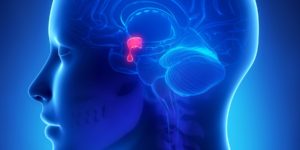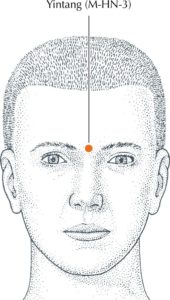Growth hormone is produced by the anterior pituitary, also known as somatotropin or GH, which promotes muscle and skeletal growth.

I just want to share some cool stuff about growth hormone because it is one of our anti-aging hormones— and we all want a dose of that.
Growth hormone deficiency or GHD is characterized by abnormalities in: metabolism; body composition and fat masses; bone density and mass; low mood; poor self-esteem; anxiety; and even social isolation; adults with GHD have increased rates of cardiac disease, particularly because the deficiency affects their body mass and fat deposition.
Growth hormone acts on the liver to cause synthesis and the release of IGF-1 and IGF-2, which are insulin like growth factors. IGF-1 stimulates bone growth, lipolysis (which is the breakdown of lipids or fats), and stimulates protein synthesis. The root of the metabolic problems might be seated in the anterior pituitary. And the reason I’m spending so much time lingering here in growth hormone is because it has such a huge role on our metabolism — something a lot of our clients are struggling with.
Do you know which superfood helps us to produce more growth hormone or to keep our growth hormone in check?
Its goji berries. Goji berries contain sesquaterpines, which are a natural chemical that helps our bodies to produce human growth hormone. Sesquiterpenes are found in some essential oils too — such as cedarwood and sandalwood and frankincense.
A few other food sources that can support growth hormone production include: pineapple, if eaten before bed; fava beans — which also contain L-dopa, a precursor to dopamine, often used in treating Parkinsons — and mucuna pruriens also contains the L-dopa; coconut oil; grass-fed beef; raw cacao; algaes; gelatin; colostrum and really, when thinking about growth hormone, don’t forget to think about SLEEP, and exercise as two key factors to help boost production.
Metabolism is the breakdown of food into simple substances that can be used by the body in certain processes. Some of the roles of the growth hormone in metabolism are to deliver molecules, conserve sugars, build proteins and break fats.
This is why I think sleep is probably one of the most important with clients struggling with weight loss.
Let’s bring in an exercise that we can all do to help stimulate the pituitary gland. This is called The Pituitary Tap. Tapping has its basis in many ancient forms of healing, including Chi Gong. Tapping is considered vibrational therapy. By tapping rhythmically on a bony area where the vital organs are housed, it is said that an electrical energy pulse is stimulated so that the gland starts to secrete the key hormones. It’s like a little loving wake-up call.
In Chi Gong, there is a method referred to as “Three Taps” that encompasses tapping areas on the neck and head, to stimulate the pineal and pituitary glands; the chest, to stimulate the thymus gland; and the kidneys, to awaken the adrenal glands.
For part one of the Three Taps, make a fist with each hand, with the thumb resting against the pointer finger. Use the first row of knuckles and the base of the palms to tap the base of the neck, up to the base of the skull, and over the top of the head toward the forehead and back down again. You’re tapping rhythmically like you would a drum, which enlivens the microcirculation of the brain.
Also, remember that the pituitary lies right between your eyes, directly behind a small bump called the glabella. That’s the location of an important acupuncture point: Yin Tang. Find that point at the bridge of your nose. Now take two fingers, pressed together, and gently tap the glabella about 20 times. You can easily do this several times a day — This will help to stimulate pituitary function, promote better sleep, calm down the spirit.

In addition to tapping, great nutritional support for the health of the pituitary gland includes sufficient amounts of manganese and magnesium, vitamin-E complex and the herb fenugreek, which can easily be made into a tea. When thinking about these minerals and vitamins and herbs, remember that food is first and you don’t need to rush to supplement — though magnesium is one of our key supplements to bring into any healing protocol. And it can’t hurt here!